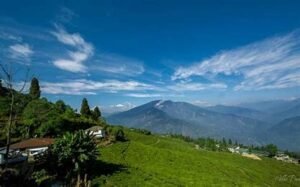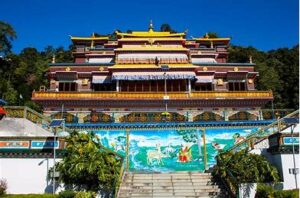Mawlynnong Village, nestled in the picturesque state of Meghalaya in Northeast India, is renowned for being the cleanest village in Asia. This village has earned recognition for its pristine environment, well-maintained public spaces, and the dedicated efforts of its residents to preserve nature. Beyond its cleanliness, Mawlynnong is a living example of sustainable practices and community involvement. In this blog, we will delve into the historical roots, culture, traditions, and environmental practices that make Mawlynnong unique.
Historical Roots: A Rich Heritage
Mawlynnong has a long and rich history, with its roots deeply embedded in the traditions of the Khasi tribe, who are the indigenous people of the region. The Khasi people are known for their strong cultural identity, which includes a deep respect for nature. The village’s commitment to cleanliness and environmental preservation can be traced back to the traditional Khasi belief that nature should be revered and protected.
The Khasi people have lived in Meghalaya for centuries, and their customs have been shaped by their relationship with the land. Mawlynnong’s clean and eco-friendly environment reflects the people’s reverence for nature, passed down through generations. This historical connection to the environment continues to influence the village’s modern practices.
Language and Communication: Khasi at the Heart
The primary language spoken in Mawlynnong is Khasi, an Austroasiatic language that holds significant cultural importance. It is the mother tongue of the Khasi people and plays a key role in passing down the village’s rich traditions, folklore, and values. In Mawlynnong, elders tell stories of the past, and these oral traditions are important for preserving the community’s identity.
Khasi is more than just a language; it is a symbol of the people’s connection to their roots. The language is a vital tool for communication, especially in a close-knit community like Mawlynnong, where everyone knows each other. It is through Khasi that the village’s values of cleanliness, respect for nature, and communal cooperation are passed on to the younger generation.
Festivals and Celebrations: Honoring Nature
The people of Mawlynnong celebrate several festivals throughout the year, with each one reflecting the deep connection they have to their land and culture. The most significant of these is Shad Suk Mynsiem, a harvest festival celebrated by the Khasi people. During this festival, people dress in traditional attire, sing folk songs, and engage in dances to honor the abundance of nature.
The festival is a time for the villagers to come together and celebrate their agricultural traditions and the beauty of the land that sustains them. The village’s cleanliness is highlighted during such celebrations, as the community works together to ensure that the environment remains pristine.
Arts, Crafts, and Music: The Creative Spirit
Mawlynnong is not only known for its cleanliness but also for its vibrant arts and crafts. The Khasi people have a rich tradition of weaving, bamboo crafts, and pottery. The use of bamboo is particularly significant, as it is a versatile material that is used for building homes, creating tools, and making art. Many of the villagers are skilled craftsmen, and their creations are highly regarded for their quality and beauty.
Music also plays a vital role in Mawlynnong’s culture. Traditional instruments, such as the bamboo flute and drums, are commonly used during festivals and celebrations. These instruments are used to create melodies that connect the people to their heritage and the natural world around them.
Cuisine and Culinary Traditions: Simple and Nutritious
The cuisine of Mawlynnong, like the village itself, is simple yet rich in flavors. The traditional diet of the Khasi people consists of rice, pork, and vegetables, all of which are locally grown and sourced. Jadoh, a rice and meat dish, is a popular food in the village, often prepared for special occasions and communal meals.
Food in Mawlynnong is not just about nourishment; it is a way of bringing people together. Meals are often shared with neighbors and guests, strengthening the sense of community. The ingredients used in traditional dishes are sourced sustainably, with a focus on local produce, which contributes to the village’s eco-friendly practices.
Attire and Ornamentation: Cultural Identity
The traditional attire of the Khasi people reflects the region’s cultural heritage and respect for nature. Women in Mawlynnong wear a distinctive Jymphong, a garment made of traditional handwoven fabric. The men often wear a dhoti or a ka-ju (a traditional skirt). These garments are not only practical for the region’s climate but also serve as a symbol of cultural identity.
In addition to clothing, jewelry and ornaments made from natural materials like bamboo, beads, and silver are worn during festivals and celebrations. These ornaments serve as expressions of beauty, status, and cultural pride.
Beliefs and Values: A Community’s Respect for Nature
The people of Mawlynnong place a high value on community, sustainability, and environmental conservation. One of the core beliefs of the Khasi people is that nature is sacred and should be protected. This belief is reflected in the village’s commitment to cleanliness. The villagers work together to ensure that the village remains free of litter, and they practice sustainable waste management techniques such as composting and using biodegradable materials.
The respect for nature goes beyond cleanliness. It is woven into the fabric of everyday life, from the way the villagers farm to the way they interact with the natural world. This strong sense of responsibility toward the environment ensures that Mawlynnong remains one of the cleanest villages in Asia.
Customs and Etiquette: A Strong Sense of Community
In Mawlynnong, customs and etiquette play an important role in maintaining the village’s cleanliness and harmony. One of the key customs is the collective responsibility to keep the village clean. Every resident, young or old, is expected to participate in the upkeep of the community, whether it is through sweeping the streets, managing waste, or planting trees.
Etiquette also extends to how visitors are treated. The villagers are known for their hospitality and warmth, and guests are always welcomed with open arms. The community’s strong sense of respect for one another contributes to the overall cleanliness and orderliness of the village.
Architecture and Symbols: Harmony with Nature
The architecture in Mawlynnong is simple, functional, and in harmony with the natural surroundings. The houses are primarily made from bamboo, a material that is abundant in the region. Bamboo is not only durable but also environmentally friendly, as it grows quickly and requires minimal resources to cultivate.
The villagers use sustainable construction techniques that minimize their environmental impact. The roofs of the homes are often covered with thatch, and the houses are built with the landscape in mind, blending seamlessly into the natural environment. This architectural style reflects the Khasi people’s deep respect for nature and their desire to live in harmony with the land.
Oral Traditions and Storytelling: Preserving the Village’s Legacy
Storytelling plays an important role in Mawlynnong’s culture. Elders in the village pass down stories of their ancestors, the village’s history, and their relationship with the land. These stories are not just for entertainment but serve as lessons for younger generations about the values of community, respect, and environmental stewardship.
Oral traditions also help preserve the unique culture and language of the Khasi people. Through storytelling, the village’s identity is kept alive, and the younger generation learns about their heritage and responsibilities to their community and the environment.
Interactions with Nature: A Sustainable Way of Life
In Mawlynnong, people live in close connection with nature. They engage in sustainable farming practices, growing rice, vegetables, and fruits without harming the land. The villagers also maintain a strong relationship with the surrounding forests, using resources in a way that ensures they remain abundant for future generations.
The village is surrounded by lush greenery, and the residents work hard to protect the environment. Through practices such as rainwater harvesting, organic farming, and waste recycling, the people of Mawlynnong show that living sustainably is possible even in a rapidly changing world.
Challenges and Preservation: Protecting the Village’s Future
While Mawlynnong is a shining example of environmental consciousness, it faces challenges. The pressures of modern development, population growth, and tourism can threaten its pristine environment. However, the community remains committed to maintaining its clean and sustainable way of life.
Efforts to preserve the village’s cleanliness include strict regulations on waste disposal, eco-friendly tourism initiatives, and educational programs to raise awareness about environmental issues. The village’s success in staying clean shows that a small community can make a big impact when everyone works together.
Contributions to Society: A Model for Sustainable Living
Mawlynnong Village serves as a model for sustainable living, both in India and globally. The village’s practices have inspired many other communities to take action in preserving the environment and promoting cleanliness. Mawlynnong’s success story shows that with dedication, a community can thrive while maintaining a strong commitment to sustainability.
Connection to Northeast India: A Proud Representation
Mawlynnong is a proud representation of Northeast India’s commitment to nature and sustainability. As part of the region’s diverse cultural and environmental landscape, it highlights the unique values and traditions of the Khasi people. The village is a reminder that small actions can lead to significant change, and it stands as a beacon of hope for other communities striving to live in harmony with nature.
Conclusion: Mawlynnong – A Village for the Future
Mawlynnong Village’s commitment to cleanliness, sustainability, and community is a shining example of what can be achieved when people come together with a shared goal. Its rich history, cultural practices, and respect for nature make it a unique place that serves as a model for others. To ensure its future, it is essential to continue supporting eco-friendly practices and preserving the village’s traditions.
Let Mawlynnong inspire us all to take responsibility for the environment, maintain our cultural heritage, and work together for a cleaner, more sustainable future.




